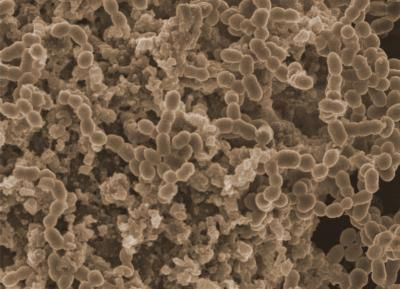Long-Surviving Bacteria On Household Objects Could Pose Health Risk To Children; Toys, Cribs, And Books Could Hold Bacteria For Months

Recent developments in bacterial research have found circumstances that could increase the risk of infection in children. Children’s weakened immune systems already make them particularly susceptible to infection, which is why parents and caregivers often clean their surroundings thoroughly — after all, bacteria isn’t supposed to live for a long time outside of the human body. But according to a new study, certain kinds of bacteria may be more difficult to get rid of, even when common household objects are cleaned.
Researchers from the University of Buffalo discovered last year that some bacteria form colonies by sticking onto each other with the help of an extracellular substance, sometimes called microbial slime. These groups of bacteria, called biofilms, are stronger against antibacterial agents. With this in mind, the researchers then wanted to determine “how well biofilm survive outside of the body.”
“Bacterial colonization doesn’t, by itself, cause infection, but it’s a necessary first step if an infection is going to become established in a human host,” Anders Hakansson, Ph.D., senior study author and assistant professor of microbiology and immunology at the UB School of Medicine and Biomedical Sciences, said in a statement. “Children, the elderly, and others with compromised immune systems are especially vulnerable to these infections.”
Dr. Hakansson and his colleagues looked at the prevalence of Streptococcus pneumoniae — responsible for ear and respiratory tract infections — and Streptococcus pyogenes —the cause of strep throat and skin infections — on common inanimate objects, such as stuffed toys, cribs, and books, at a daycare center just before opening, according to PBS. They found that four of the five stuffed toys tested positive for S. pneumoniae and other surfaces, such as the cribs, tested positive for S. pyogenes, even though they had been cleaned the night before.
“In all of these cases, we found that these pathogens can survive for long periods outside a human host,” Dr. Hakansson said in the statement. These groups, he said, could act as reservoirs of bacteria in which it accumulates and continuously spreads for weeks or even months to those who come in contact with it.
However, he also admitted that the findings are only the first step in understanding how this type of contact can lead to infection, saying that the established route to infection is only through inhaling infected body substances from someone who coughs or sneezes. If future research can determine that this type of spread can also cause infection, he said, “then the same protocols that are now used for preventing the spread of other bacteria, such as intestinal bacteria and viruses, which do persist on surfaces, will need to be implemented.”
Source: Marks L, Reddinger R, Hakansson A. Biofilm Formation enhances Fomite Survival of S. pneumoniae and S. pyogenes. Infection and Immunity. 2013.



























